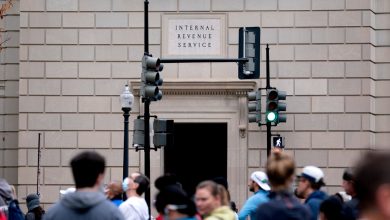E.P.A. to Tighten Tailpipe Rules for the Biggest Polluters on the Road

WASHINGTON — The Biden administration on Monday proposed strict new limits on pollution from buses, delivery vans, tractor-trailers and other heavy trucks — the first time in more than 20 years that tailpipe standards have been tightened for the biggest polluters on the road.
The new draft rule from the Environmental Protection Agency would require heavy-duty trucks to reduce emissions of nitrogen dioxide by 90 percent by 2031. Nitrogen dioxide is linked to lung cancer, heart disease and premature death.
The E.P.A. also announced plans to slightly tighten truck emissions of carbon dioxide, a greenhouse gas that is driving climate change. The new rules for nitrogen oxide pollution would apply to trucks beginning with the model year 2027, while thecarbon dioxide rules would apply to trucks starting with the model year 2024.
The truck pollution rule is the latest in a series of new pollution policies under President Biden, who is seeking to reduce the emissions that are dangerously warming the planet and rebuild environmental standards that had been weakened by President Donald J. Trump.
Vice President Kamala Harris announced the proposal, along with a suite of other federal clean transportation actions, including the expenditure of $5.5 billion to help states purchase low or zero-emission transit buses, and $17 million to replace diesel school buses with electric versions in underserved communities.
Late last year, the E.P.A. tightened standards on auto pollution and announced new rules governing methane, a climate-warming gas that leaks from oil and gas wells. This year, the agency is expected to roll out new restrictions on greenhouse gases and on industrial soot released by power plants.
A Critical Year for Electric Vehicles
The popularity of battery-powered cars is soaring worldwide, even as the overall auto market stagnates.
- Going Mainstream: In December, Europeans for the first time bought more electric cars than diesels, once the most popular option.
- Turning Point: Electric vehicles account for a small slice of the market, but in 2022, their march could become unstoppable. Here is why.
- Tesla’s Success: A superior command of technology and its own supply chain allowed the company to bypass an industrywide crisis.
- Rivian’s Troubles: Investors first embraced this electric vehicle maker. Now they worry it may not live up to its promise.
- Green Fleet: Amazon wants electric vans to make its deliveries. The problem? The auto industry barely produces any of the vehicles yet.
The administration is portraying the truck rule announced Monday as central to Mr. Biden’s agenda of environmental justice, as many communities of color are located alongside highways and are subject to elevated levels of pollution.
“Seventy-two million people are estimated to live near truck freight routes in America, and they are more likely to be people of color and those with lower incomes,” the E.P.A. administrator, Michael S. Regan, said. “These overburdened communities are directly exposed to pollution that causes respiratory and cardiovascular problems, among other serious and costly health effects. These new standards will drastically cut dangerous pollution by harnessing recent advancements in vehicle technologies from across the trucking industry as it advances toward a zero-emissions transportation future.”
Public health experts welcomed the move. “Cleaning up trucks is a critical step to achieving the president’s vision not only of environmental justice but also the cancer moonshot,” said Paul Billings, a senior vice president at the American Lung Association. “Diesel gas is a known carcinogen.”
The new limits would prevent up to 2,100 premature deaths, 6,700 hospital admissions and emergency department visits, 18,000 cases of asthma in children, 78,000 lost days of work and 1.1 million lost days of school by the year 2045, according to E.P. A. estimates.
The agency estimates that the economic benefits of the rule could be up to $250 billion and said those benefits “would exceed its costs by billions of dollars.”
But truckers and manufacturers say the rule is too stringent and costly, and that compliance could send higher prices rippling through the economy.
“This new standard simply may not be technologically feasible,” said Jed Mandel, president of the Truck and Engine Manufacturers Association, an industry group. “We’re worried about the cost. There is a potential of adverse impacts on the economy and jobs. Nobody wants to see union jobs laid off. Regular lunch-pail, blue collar workers.”
Jay Grimes, director of federal affairs for the Owner-Operator Independent Drivers Association, said new restrictions would be especially onerous for small truckers, which he said comprise 90 percent of the industry.
“We’ve seen since the start of the pandemic the efforts truckers are making on a daily basis to keep the supply chain stable,” Mr. Grimes said. “Higher prices on the small business side are going to get passed down to consumers in the supply chain.”
The federal government last updated its truck emissions rule in 2001, when the E.P.A. required commercial trucks to cut emissions of nitrogen dioxide by 95 percent over 10 years. That contributed to a 40 percent drop in national nitrogen dioxide emissions, the agency said. It estimates that the new rule will contribute to a 60 percent drop in emissions by 2045.
The E.P.A. called the new rule the first in a three-step “Clean Trucks Plan” — a series of clean air and climate change regulations over the next three years designed to reduce pollution from trucks and buses and to accelerate the transition to a future of all-electric, zero-pollution vehicles.
After a first year in which President Biden tried to push ambitious climate legislation through Congress, only to see it stall, the administration is using its regulatory machinery to try to curb pollution.
The E.P.A. is working on new limits for auto pollution, due out next year, which it hopes will accelerate a transition to electric vehicles. Mr. Biden has pledged that half of all new cars sold in the United States by 2030 will be electric vehicles.
While the new truck regulations will cut pollution that harms human health, they won’t do much to reduce emissions that warm the planet, climate experts said.
The proposed regulations will require some trucks, 17 of the 33 categories of heavy-duty trucks, to lower their carbon dioxide emissions. That’s designed to bolster sales of all-electric trucks in the United States, from fewer than 1,000 in 2020 to about 1.5 percent of total truck sales, or roughly 10,000 trucks, in 2027.
But in order to put the United States on a path toward a transition to all-electric trucks, the forthcoming truck rules would have to be far more stringent, experts said.
“It’s great to see that the rule is driving 90 percent reduction in air pollution in heavy-duty vehicles and at the same time opening the door to reducing greenhouse gas pollution,” said Drew Kodjak, executive director of the International Council on Clean Transportation, a research organization. “But we’ve got this thing called climate change and we’ve really got to start driving electrification in the heavy-duty truck sector. My big concern is that the proposal as it is written will not do that.”
Advocates for warehouse workers, many of whom are exposed to constant diesel pollution, said they would like regulations that replace diesel-fueled trucks with electric or zero-emissions vehicles.
“Cutting emissions anywhere is good,” said Yana Kalmyka, an organizer with Warehouse Workers for Justice. “But if you’re thinking about a community that has tens of thousands of trucks a day passing through it, electrification is the only just solution. The rule is not addressing other industrial truck pollutants such as soot, and we know that black and brown communities are facing cumulative burdens from these pollutants.”
Transportation is the largest single source of greenhouse gases generated by the United States, representing 29 percent of the nation’s total emissions.
The E.P.A. has said it intends to create another set of greenhouse gas rules for trucks, beginning as soon as model year 2030, that will be “significantly stronger” than the current standards, and designed to speed the transition to all-electric trucks.
“Waiting for another few years to do the next set of greenhouse gas standards for trucks is wrong. We just don’t have time,” said Margo Oge, an expert on electric vehicles who headed the E.P.A.’s Office of Transportation and Air Quality from 1994 to 2012. “My hope is that they will use this time to strengthen the standard now.”
The rule announced Monday will be open for public comment for 46 days, and the E.P.A. is expected to finalize it by the end of 2022.





